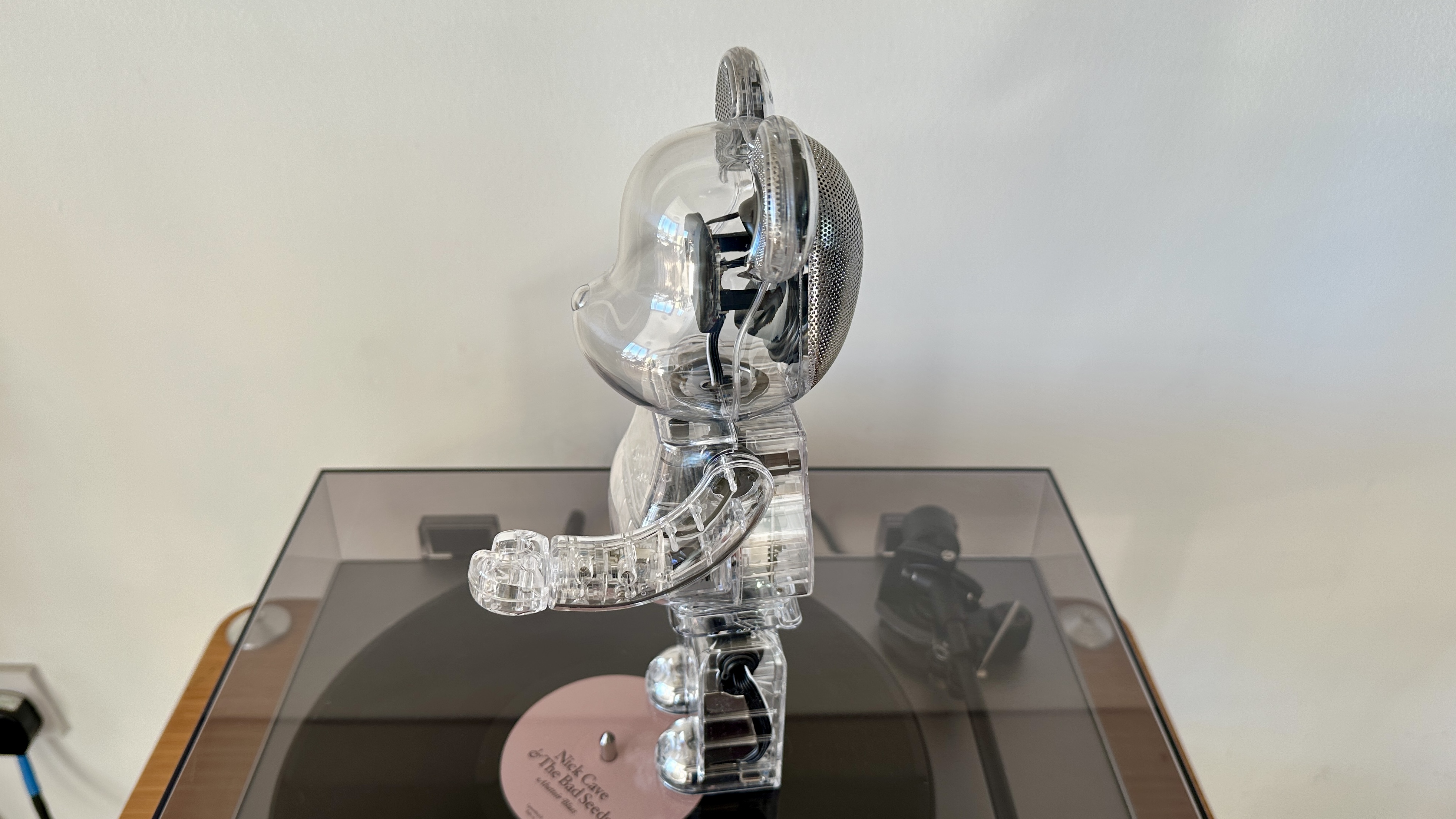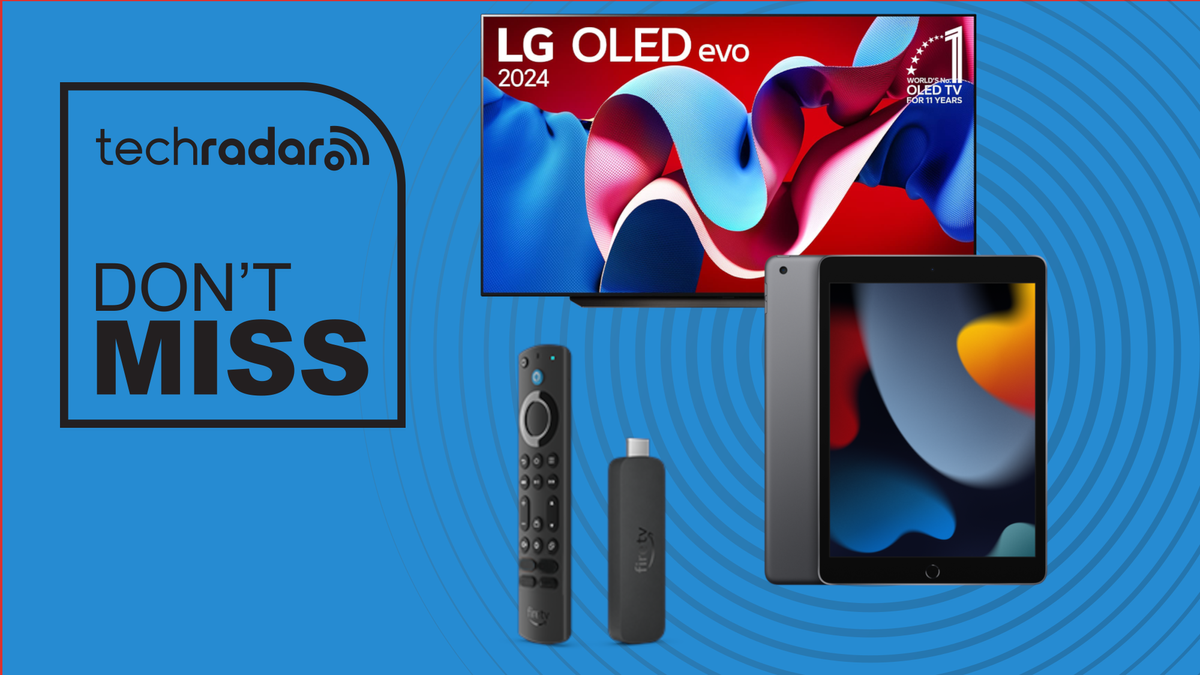There are two things you should know before we get into the details of one of the strangest wireless speakers we've ever found (the Bearbrick is so unique and outrageously priced that it will probably never be among the best Bluetooth speakers we've found). I've tried it, but that doesn't mean it's not one of the most interesting we've come across.)
The first is that Medicom Toy (purveyors of collectible action figures, vinyl dolls and what have you) have achieved something very close to ubiquity with their Bearbrick model. There's no design museum worth the name that doesn't have an example or two, and there are literally thousands of variations of its '400%' model available on the company's website. Fancy a Bearbrick like Tweety? Or like Andy Warhol? Or one or the other of Daft Punk? Go right ahead.
The other is that I've been reviewing audio equipment for over two decades and in that time I've never strayed from the opinion that a product should perform to a standard that justifies its asking price if I'm not going to use it. to put the boot in. I've lost count of the number of times a manufacturer (or their representatives) has tried to tell me that because a product is gold-plated, or limited edition, or endorsed by a musician, then the rules of “quality by pound” should not apply. Naturally, I'm always very polite, but I also naturally don't find it that hard to ignore this nonsense.
Rinaro doesn't make toys
While I always do my best not to prejudge equipment, I can't pretend that I didn't have my reservations about the Bearbrick Audio 400 before its arrival. An unintelligent Bluetooth speaker? A silly Bluetooth (i.e. non-Wi-Fi) speaker with poseable arms and legs? Is it $500 / £595 / AU$760? I know full well that writing a negative review is generally easier (and more fun) than writing a positive review, but really… this seemed like shooting a fish in a barrel.
But again, the press release mentioned input from Rinaro Isodynamics of Ukraine. I'm familiar with Rinaro Isodynamics, which is a well-known brand in audiophile circles thanks to its renowned excellence when it comes to high-end products such as planar magnetic drivers.
I had first-hand experience of their experience very recently, when I reviewed some $3,000 / £2,750 / AU$4,560 Meze Audio headphones that included Rinaro Isodynamics components (like the Meze Audio Liric) and, as far as experiences go, auditory, this was prodigious. Rinaro's participation in Audio 400 made me wonder if it was actually going to be more than just nonsense and irrelevance after all…
Childish or the cutest thing you can imagine?

Once the Bearbrick Audio 400 arrived, I was able to give the product due consideration. On the plus side, a four-driver array (two 20mm polypropylene tweeters, one in each ear, and two 40mm carbon paper cone mid/bass drivers angled from the back of the bear's skull) Designed to deliver omnidirectional sound and powered by 20 watts of Class D amplification, it looks good on paper.
Bluetooth 5.0 with codec support limited to SBC and AAC, however, does not. I guess six hours of battery life is fine. And I was conflicted over the control options: is turning the bear's left paw to adjust the volume and its right paw to jump forward or backward through my playlist just juvenile? Or is it the cutest thing you can imagine?
With the (replaceable) battery charged (via the USB-C connector on the bear's left heel) and a wireless connection to a Samsung S23 Ultra smartphone, it was time to do some critical listening. Standing with its arms at its sides, the Audio 400 has neat dimensions of 280 x 132 x 70 mm (height x width x depth); In other words, the perfect size to stand at my desk and look over my laptop while listening to that endless music. playlist of test tunes I've been collecting for years.
A spacious and tonally balanced listen

Like I said, I've been doing this kind of work for a really long time, but I can count on one hand the times I've come across a product that I'm willing to cut at even the slightest hint of slack when it comes to to yield per pound.
And although it has some real positives when it comes to its audio presentation (it's quite spacious, tonally balanced, reasonably punchy and quite eloquent, particularly in the midrange), the Bearbrick Audio 400 is not without its problems. . The idea that its sound is omnidirectional, for example, is fanciful. It's basically flat when it comes to dynamics. Yes, it is an energetic and fairly well-controlled listen, but if you lower the volume, the bass advances noticeably.
And for a tough and dispassionate person like me, of course, the biggest problem is the price. $500 / £595 / AU$760 is a lot for a dumb Bluetooth speaker, and it's even more to pay for a Bluetooth speaker that doesn't offer class-leading sound. Honestly, you can spend $300 / £349 / AU$520 on a DALI Katch G2 and get more complete audio performance. Does the DALI look like a bear? No, it's not like that. Does it represent better value for money than the Audio 400? You can bet your boots it does.
The Bang & Olufsen phenomenon

In this case, there is more at stake than whether or not a particular product represents good value for money. For years, I have privately referred to this as “the Bang & Olufsen phenomenon.” In my experience, Bang & Olufsen customers are very aware that they are paying more for the design and that they could achieve similar performance with a non-B&O alternative for much less money if they were willing to give up the “design” element. “, but They are not there. Bang & Olufsen customers know they are paying more than expected in pure performance terms and they don't care.
The Bearbrick Audio 400 is a similar proposition. I don't think it's any kind of coincidence that the only brick-and-mortar retailer in the UK to carry it is Selfridges; in the US, you can find it for sale for a slight upcharge on the MOMA site. It's a product that will be sold to a very specific customer base that doesn't care whether or not they can get similar sound quality with a less dramatic looking speaker that costs a lot less money. They want the bear with the speakers in his ears.
I didn't want to like the Bearbrick Audio 400. I wanted it to be a cynical marketing exercise and a ploy to fleece the gullible. But it's not… at least not entirely. I like a lot. It's not enough to consider spending $500 / £595 / AU$760 on one, of course, but I'm certainly not going to put the boot on it.









